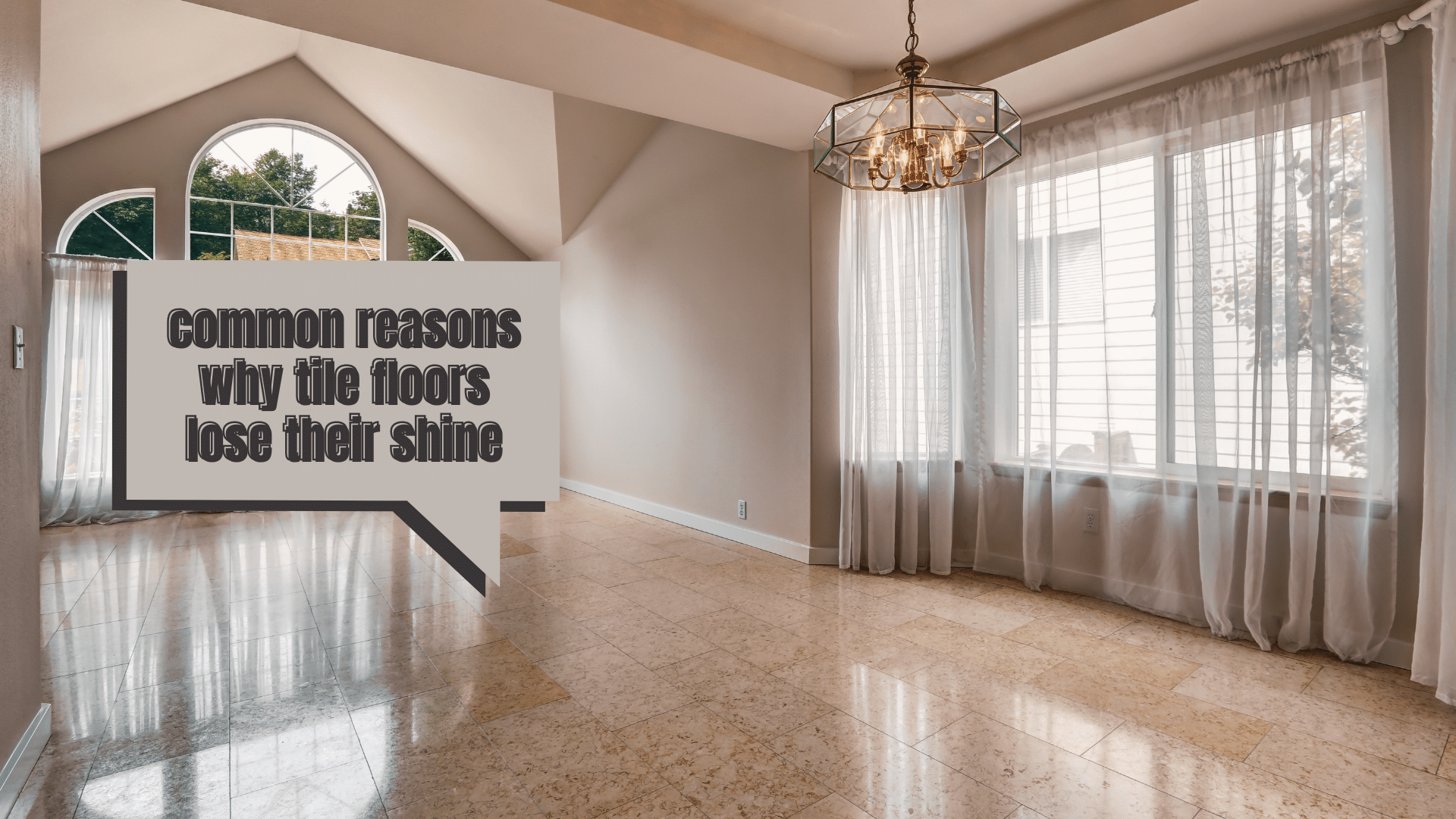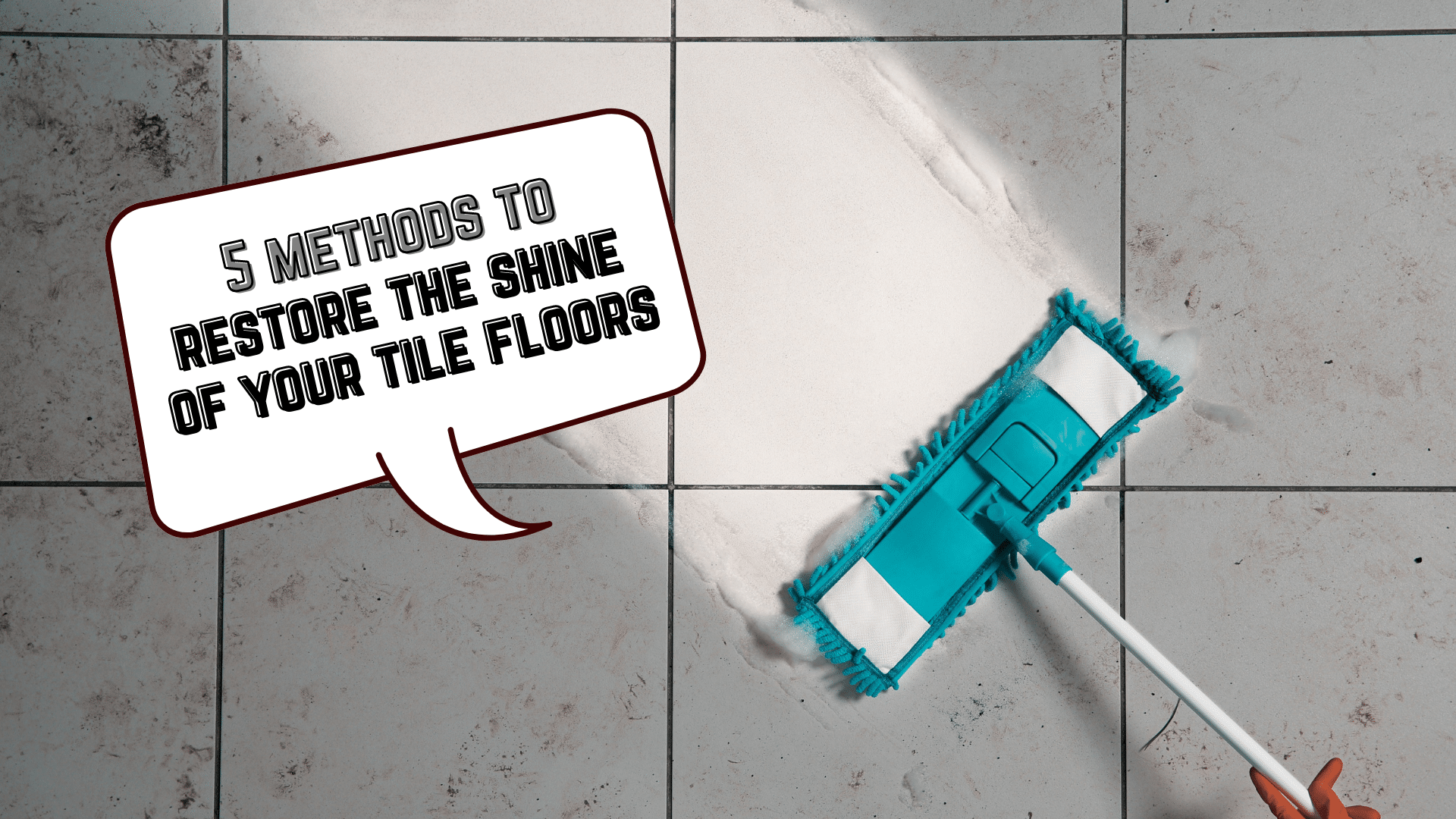Tile floors are a classy flooring material available in several different colors and designs. That said, more homeowners continue to choose tile flooring as it can easily blend with their existing interior decor. (Related: Tile Installation: A Cost & Consumer Guide)
Regardless, most tile floors may become dull and grimy once neglected. These floors lose their shimmer due to stains, dirt, and dust build-up.
Don’t worry. We’re here to help you with the most popular natural methods to bring back the shine of your tile floors.
Why do Tile Floors Lose their Shine?

Because of dirt, stains, and heavy wear– tile floors may become dull eventually. Aside from being visually unappealing, your floors may appear outdated to any onlookers.
So instead of ignoring these old, dull floors, you can follow natural methods to restore your tile floors to their former glory. The good thing here is you won’t need to spend much on commercial products. Additionally, it also protects the environment from possibly toxic chemicals.
For your reference, here are the most common culprits that may dull or stain your old tile floors:
Natural Ways to Make Your Tile Floors Shine

Fortunately, you can follow these easy methods to restore the old shine in your tile floors. Some of these materials may also be found in your household conveniently.
Method 1: Soapy Water
Let’s start with the classic soap and water solution to make your tile floors shine. Making a soapy water solution is relatively easy; simply add detergent into a mop bucket with warm water. Mix it thoroughly, and you’ll have a soapy solution. Now that you have the solution grab a mop to apply it to your floors seamlessly.
Process:
Method 2: Baking Soda Paste
Another common ingredient to clean stains on tile floors is baking soda. This is one of the best cleaners for different stains and dirt. In fact, many homeowners swear by this product.
Process:
Method 3: Ammonia-Water Solution
Another excellent floor cleaner is ammonia, which can remove stubborn stains and restore the previous shine of your floor tiles.
Add a few drops into a mop bucket with warm water to make the ammonia solution. Dip the mop into the solution and wring thoroughly before mopping the entire floor. This solution is known to remove any visible dirt and stains and disinfect the floors.
For persistent stains: Use a sponge that’s soaked with the ammonia-water solution and gently scrub the stains until they start to fade. Rinse the floor and dry-mop afterward.
Process:
Method 4: Vinegar Solution
Vinegar is a powerful natural cleaning agent that meets your different cleaning needs. To make a simple vinegar solution at home, combine 1 part water with 1 part white vinegar in a 1 gallon bucket of water.
The vinegar ingredient effectively disinfects your tile floors and deodorizes them. Once the vinegar dries, it leaves a natural scent on your floors, making any room smell fresh.
Alternative route: Pour the vinegar solution into a small spray bottle. You can opt to spray the tile floors in sections before wiping each area one by one.
Process:
Pro tip: Do not mix the vinegar solution with any bleach to avoid potentially dealing with a health hazard.
Method 5: Ammonia, Borax, and Vinegar
Combining several household items such as ammonia, borax, and vinegar is also possible to make a powerful tile flooring cleaner. This can be effective in removing stubborn soap scum and dirt build-up, to name a few.
Process:
Bonus: High Gloss Tile Sealer
After cleaning your old tile floors with natural methods, it’s recommended to apply a coat of high gloss tile sealer to protect the shine and increase its longevity.
Always choose the right product specifically designed for your tile floors at home. Keep in mind that many high-gloss sealers are designed for natural stone tiles rather than ceramic ones. Test the product on a sample tile to ensure it doesn’t cause any issue.
Topical sealer may fade or be scratched in the long run, so remember that the results may not be long-lasting. As such, you can opt to strip and re-apply the sealing product.
4 Expert Tips to Keep in Mind
Now that we’ve covered some of the most popular natural methods to bring back the shine of old tile floors, here are some expert-backed tips to keep in mind. These will help you achieve the best results.
